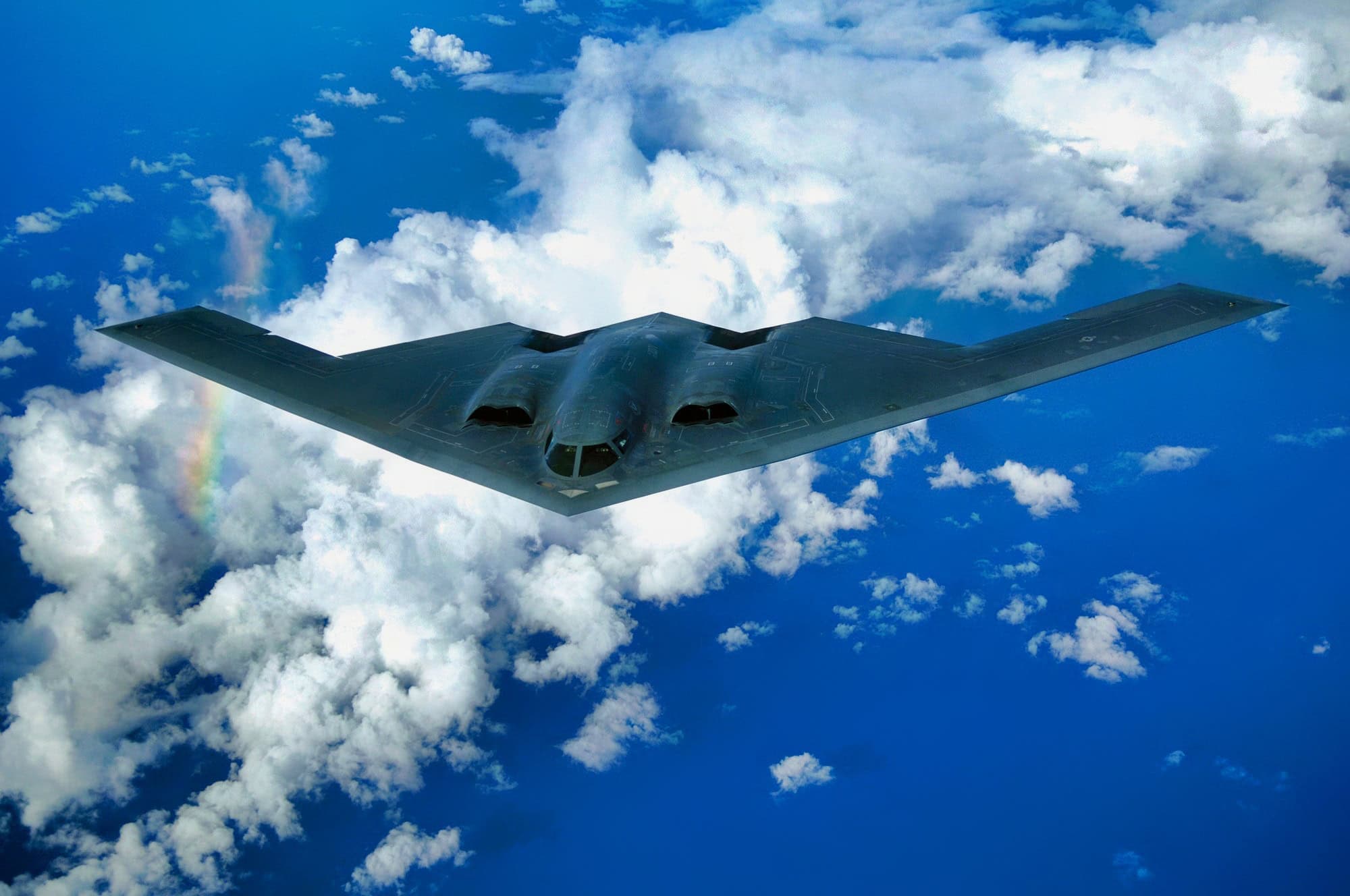Summary and Key Points: The B-2 Spirit stealth bomber was designed during the Cold War as America’s answer to advanced Soviet air defenses.
-Featuring revolutionary stealth technologies and a distinctive flying-wing design, it was originally planned in large numbers.
-However, the collapse of the Soviet Union sharply reduced its acquisition, resulting in only 21 aircraft built.
-Despite limited numbers, the B-2 excelled in conventional missions, seeing combat in Kosovo, Iraq, Afghanistan, and against ISIS.
-As the aging fleet nears retirement, the next-generation B-21 Raider stealth bomber, significantly more advanced and numerous, is set to replace it, reflecting renewed strategic emphasis amidst rising global tensions.
The B-2 Bomber Was Made in Small Numbers: The Air Force Can’t Fix That
The United States Air Force B-2 Spirit bomber was developed during the waning years of the Cold War as part of an effort to maintain the viability of American nuclear deterrent in the face of increasingly sophisticated Soviet air defenses.
The B-2 was designed as a long-range, stealth strategic bomber intended to penetrate heavily defended airspace and deliver nuclear or conventional weapons against high-value targets.
Origins
The origins of the B-2 program trace their roots back to the 1970s and early 1980s when U.S. defense planners sought to counter Soviet radar and surface-to-air missile systems.
The B-2’s flying wing design and radar-absorbing materials were intended to dramatically reduce the aircraft’s radar cross-section compared to conventional bombers and make it exceedingly difficult to detect and track, allowing it to bypass Soviet air defenses and strike strategic targets deep within enemy territory.
The bomber’s materials and design were revolutionary and heralded a new age of strategic bombing and a new type of bomber: one that couldn’t be detected or shot down — ensuring the United States second-strike capability in the event of nuclear war.
But despite the B-2’s innovative design, the U.S. Air Force ultimately acquired less than two dozen.
Why the B-2 Bomber Nightmare Occurred: No Cold War, No Need for Stealth Bombers
Initially, the U.S. Air Force planned to procure 132 stealth bombers, but the program cost, which ballooned upward thanks to its incredibly advanced technology, became the target of sharp criticism and political scrutiny. The ultimate price tag for each individual aircraft exceeded $2 billion when including the costs of research and development.
However, the most significant factor for the program’s abbreviated acquisition was the collapse of the Soviet Union in 1991 and the end of Cold War hostilities.
With Russia mired in political turmoil and the military threat completely eviscerated, the justification for a large and enormously expensive — though highly capable — bomber fleet evaporated.
As a result, the U.S. Air Force ultimately purchased just 21 B-2 bombers instead of the originally planned fleet of 132.
Non-nuclear Application
Since it entered service in the 1990s, the B-2 has been used exclusively for conventional strike missions and saw service during the Kosovo War, the wars in Iraq and Afghanistan, and in support of American operations against ISIS.
Two B-2 bombers have been lost in accidents. In 2008, a B-2 crashed shortly after takeoff from Andersen Air Force Base in Guam because of a sensor malfunction that gave the bomber’s flight control system incorrect flight data.
In 2022, another B-2 made an emergency landing at Whiteman Air Force Base and was ultimately retired from service, as repair costs were not justifiable in light of the bomber’s planned retirement.
Service Sunset
The U.S. Air Force operates a fleet of 19 B-2 bombers, but barring any unforeseen circumstances, they will be retired sometime next decade as the B-21 Raider, the successor to the B-2, enters service.
Like the B-2, the B-21 is also a flying wing-type strategic stealth bomber, though its stealth capabilities are thought to be significantly more advanced than the B-2 thanks to modern materials and improved avionics and other flight systems.
The development and introduction of the B-21 Raider echo that of the B-2 Spirit in today’s age of increased geopolitical tensions and a kind of “Cold War 2.0,” and is a justification for the U.S. Air Force to acquire a large number of stealth bombers.
According to Northrup Grumman, the aerospace giant behind the B-21 Raider’s design and manufacture, “The U.S. Air Force has stated plans to acquire at least 100 aircraft. Some defense analysts believe that the Air Force should plan to purchase at least 200 B-21s.”
About the Author: Caleb Larson
Caleb Larson is an American multiformat journalist based in Berlin, Germany. His work covers the intersection of conflict and society, focusing on American foreign policy and European security. He has reported from Germany, Russia, and the United States. Most recently, he covered the war in Ukraine, reporting extensively on the war’s shifting battle lines from Donbas and writing on the war’s civilian and humanitarian toll. Previously, he worked as a Defense Reporter for POLITICO Europe. You can follow his latest work on X.

